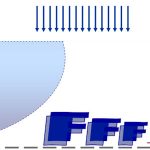 >
News
>
News
EU GUIDANCE ON THE SAFETY ASSESSMENT OF NANOMATERIALS IN COSMETICS

The Scientific Committee on Consumer Safety (SCCS) publishes updated guidance on the safety assessment of nanomaterials in cosmetics. The Scientific Committee on Consumer Safety (SCCS) provides Opinions on health and safety risks (chemical, biological, mechanical and other physical risks) of non-food consumer products (e.g. cosmetic products and their ingredients, toys, textiles, clothing, personal […]
Read moreAdvanced Materials – 1st Thematic Conference

The German Environment Agency invites representatives from science, industry, authorities and NGOs to Dessau to jointly discuss advanced materials, their potential applications and potential categories. Advanced materials are considered as heterogeneous group of new or modified materials with improved properties for intended applications. Based on their properties, the materials offer manifold applications for environmental […]
Read moreNew DaNa article is now available: Nanomaterials in the wastewater treatment plant

Engineered nanomaterials can be released from nanoproducts during use and waste disposal and a fraction can end up in wastewater. The function of wastewater treatment plants is to purify polluted water which includes the removal of nanomaterials. However, they can potentially negatively affect the purification potential of wastewater treatment plants How do nanomaterials […]
Read moreEUON: Study finds EU regulatory framework ready for the next generation of nanomaterials

A study commissioned by the EU nanomaterials observatory (EUON) has found that the current EU regulatory framework for characterising and identifying “next generation” nanomaterials is able to address the majority of them and that no significant changes will be needed in the near future. Background Member States voted to revise the REACH annexes […]
Read more7th Workshop on Field-Flow Fractionation -MS

Analytical tools in life sciences Engineered nanomaterials are subject of intense research since several years – nanoanalytical tools are mainly based on fractionation techniques such as FFF, HDC and CE coupled on-line with ICP-MS. Nowadays imaging techniques gain importance in life-science, e.g. for the application of nanomaterials or the analysis of single-cells. Thus, the 7th […]
Read more